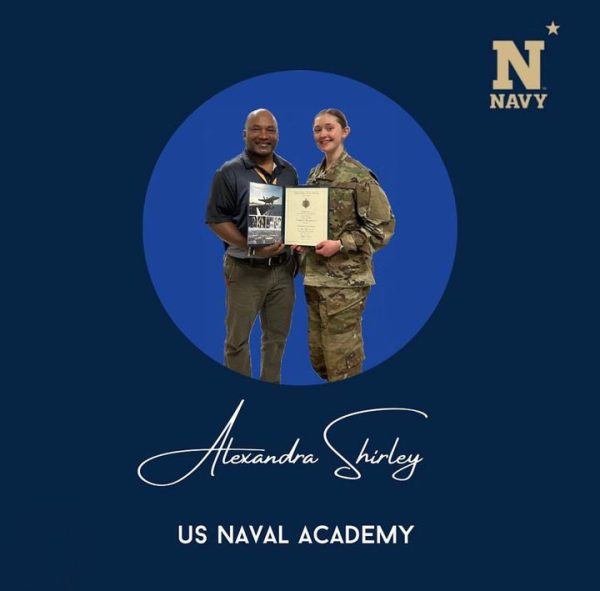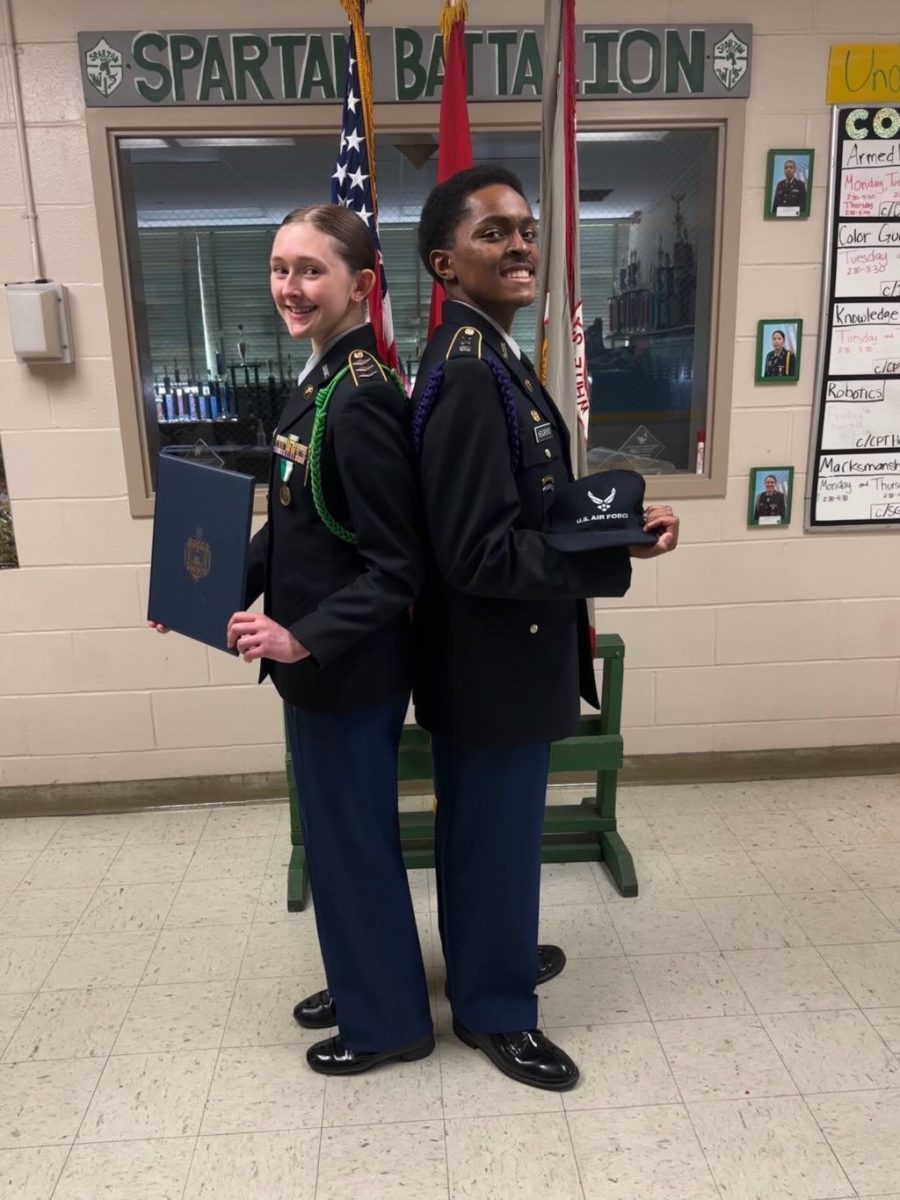Imagine getting paid to go to college and having a job guaranteed after graduation. This is a possibility for students who apply to one of the five United States service academies: the United States Military Academy at West Point; the United States Naval Academy at Annapolis; the US Air Force Academy at Colorado Springs; the US Coast Guard Academy at New London and the US Merchant Marine Academy at Kings Point. The process of gaining admission to one of these elite academies can be rigorous.
“The process [started] June of last year, although I didn’t get any acceptances until November [or] December,” Baron Hendricks (12) said. “So it took … seven months.”
Despite their reputation, the number of applicants to US service academies for the class of 2026 dropped significantly from the previous year’s applicants. Along with challenging classes, joining a service academy comes with a commitment to serve in the military.
“The military can pay for a lot of different things,” Hendricks said. “Like it can pay for college, it can pay for retirement, it can pay for a lot of different things and I know a lot of people don’t really know that because all they know is ‘fight war’… But you don’t [always] have to fight.”
For students interested in applying who do not come from a military background, it is vital to start researching as early as possible. One way to gain first hand advice is to attend academy days hosted by congressmen. At these events, all service academies represent themselves by bringing admissions officers and liaison officers to meet students and explain how to apply.
“There’s one day in seventh grade that my dad took me to Congressman Cohen’s service academy day,” Alexandra Shirley (12) said. “Before that, I never thought I would be in the military, but then when I actually met my … liaison officers … they told me ‘you know your personality seems like it would be a good fit’ and then ever since then I was like ‘that’s what I want to do.’”
The most infamous step in the application process is obtaining nominations. Every service academy, with the exception of the Coast Guard, academy requires students to have a nomination. Nominations come from either congressmen, senators, the Vice President of the US, the President of the US or through certain military connections. After applications for each nomination are submitted, the representative of their team interview potential candidates and give out a certain number of nominations for each academy.
“Each nomination is a whole separate application,” Shirley said. “So, for example, when I applied for my nomination for Congressman Kustoff, and Senator Haggardy, and Senator Blackburn and the Vice President, that was four separate applications that required separate [recommendation] letters that required separate essays. I think the number of essays and rec letters I had … were in the twenties and the essays were in the thirties, and they’re not long but there are just a lot. It’s not like Common App where you can reuse some.”
Aside from the nomination, there are many other steps in the application process. Students submit their pre-candidate questionnaire in their junior year by outlining their grades, standardized test scores, extracurriculars and other basic information. The questionnaire is the first elimination step as well as the application to optional summer seminar programs for each academy. The second phase of the application includes essays, teacher recommendations, a fitness test and a medical examination.
“Probably the hardest part for me was … the physical and the medical [portion] because … they won’t let you in if you don’t meet the weight and height standards,” Shirley said. “And then on top of that … the medical process is really hard, it takes forever and any kind of [major] procedure or injury you’ve had in the past you have to put on your application and then you have to get a waiver for it.”
In each application, several factors are weighed. Academics has the most weight, as students must be able to keep up with challenging coursework and training. Fitness levels vary across the academies, but each expects candidates to be fit and to maintain their fitness during their time at school. Several of the academies even require students to play sports daily and take fitness classes. Exhibitions of leadership are also an important factor because graduates serve as commissioned officers in the military. Most importantly, the academies want to get a picture of each applicant as an individual.
“[For the application] I wanted to be unique to myself,” Hendricks said. “I wanted to show what I do on my day-to-day … I wanted to show that I had some of the best time management skills, best responsibilities to where my application looked nice.”
Both Shirley and Hendricks have been accepted into several service academies, including the Military, Naval and Air Force academies. Each application brought along challenges but also opportunities to grow.
“The application is like a marathon, it’s not like a sprint,” Shirley said. “You have to have patience and you have to be willing to spend many, many months, like probably over a year from start to end, so if you push yourself too hard in high school and you get burnout, you’re not going to be able to do the application.”





































